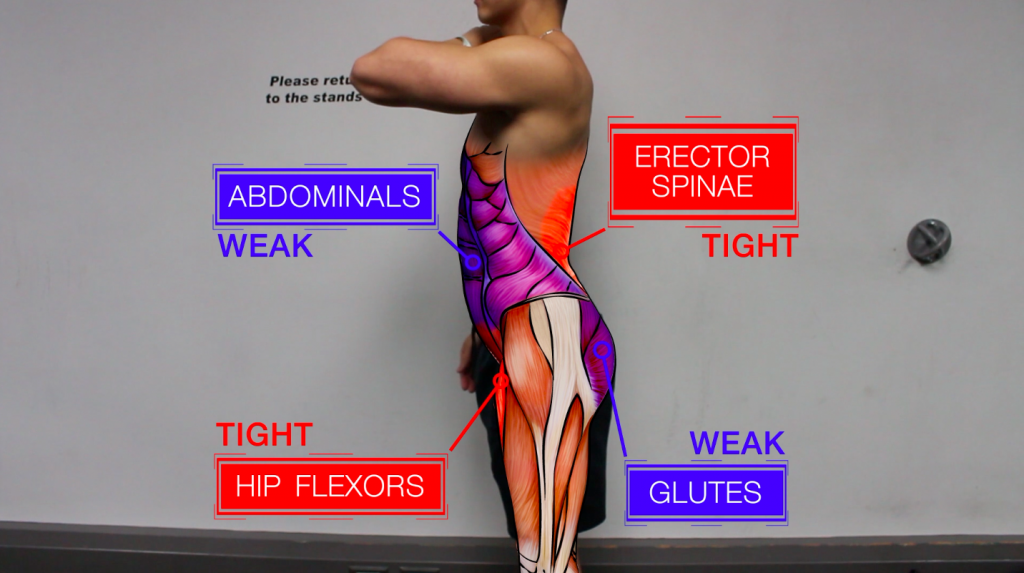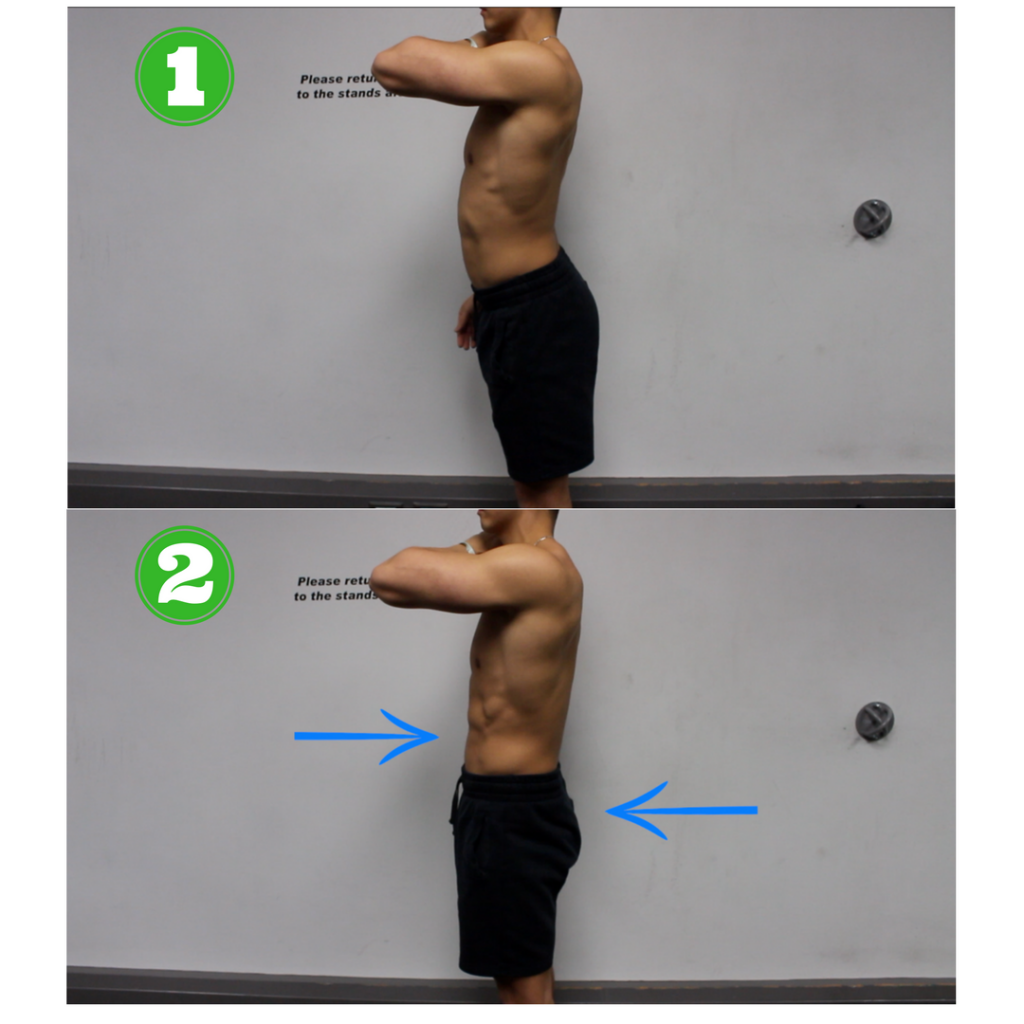Why Poor Glute and Core Activation/Strength Could Be Harming Your Fitness Progress
If you’ve been around the gym environment, you’ve probably heard people harp on about “turning your glutes on”, “strengthen your core” and “stretch your hip flexors” but it’s important to know why. Your core and glute muscles are crucial for maintaining the position of your pelvis (i.e. where your hips connect to your spine) and protecting your back.
With our current lifestyle of prolonged sitting (without a break), the muscles at the front of your hip (hip flexors) and the muscles that straighten your back (erector spinae) become overactive and therefore tight. This also means that your abdominals and glutes are inactive or switched off, as your hip flexors and erector spinae are being overworked. This creates an “anterior pelvic tilt” posture – where the position of your pelvis is tipped forward.

The problem with an anterior pelvic tilt in the long term is it can affect your exercise technique and ultimately lead to lower back pain as the wrong muscles are being overworked to compensate for the muscles (abdominal and glute) which aren't activated, which are responsible for correct lower back posture and alignment.

How to Correct Weak Abdominal and Glute Muscles
Stretching your hip flexors regularly is a great starting point in ensuring your abdominal and glute muscles are activated correctly while performing isolated and dynamic exercises. You can work your hip flexors at the start of your session as a warm-up or at the end of your session during your cool down.
We'll be sharing more examples of exercises targeted at strengthening your abdominal and glute muscles, along with stretches for your hip flexors next week!




